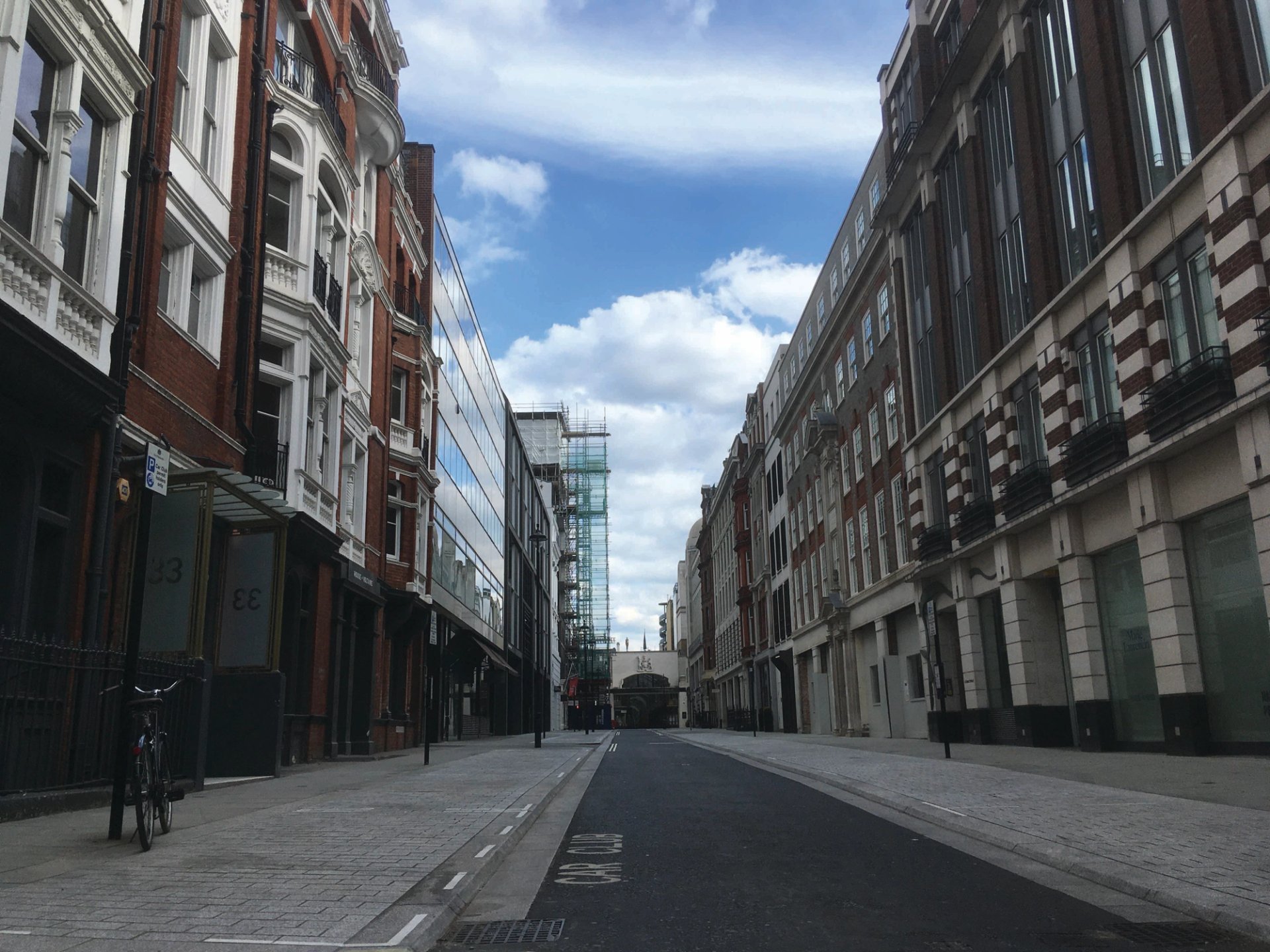After three months of enforced closure, a cluster of London galleries are planning to reopen by appointment on 15 June as the UK’s coronavirus lockdown is gradually eased, allowing non-essential retailers to open. And, thanks to the new collaborative spirit that has seemingly emerged among galleries during the pandemic, they have been helping each other work out how to reopen while complying with social distancing guidelines.
Earlier this week, a group of 14 contemporary art galleries including David Zwirner, White Cube, Pace, Gagosian, Luxembourg & Dayan, Goodman Gallery and Hauser & Wirth sent out a joint press release—an unusual move in itself—announcing their reopening plans starting from 15 June. “We welcome visitors to return to the West End and engage with a Parcours of exciting exhibitions by leading international artists,” the statement says, adding that galleries will be open by appointment only and visitors will be required to wear masks.
Goodman Gallery will reopen with a show of photographs by David Goldblatt that document South Africa’s apartheid. “We wanted to reopen with an exhibition that speaks to issues of racial inequalities that the gallery has championed for 54 years.” says Liza Essers, the gallery’s director. Regarding the lockdown, she says: “I feel we have missed that human connection. We won't be returning to the previous normal but the intimacy of connecting with individuals in the gallery has been something I've missed. It is fulfilling for our souls—and necessary.” The gallery will permit a maximum of six visitors at a time and they will be required to wear masks and have their temperatures taken.

London's Cork Street during lockdown © Katherine Hardy
“It has had an impact, there's no question,” Essers says of the lockdown. “I'm an intuitive person so running a business without the face-to-face factor between staff, artists and collectors has impacted me personally as I'm sure for all business owners and directors around the world. It's been challenging as a leader to stay in touch over digital portals like Zoom—the human factor is lost and the culture of a business changes as a result.” She adds: “A big question for me is how we will reignite connectivity in the post-lockdown new normal.”
Skarstedt is also planning to reopen its St James’s gallery on 15 June. “Many clients say they’re being bombarded with endless PDF lists of works from galleries and online viewing rooms, but they really just want to come into a gallery and see a work in the flesh and talk about it to someone again,” says Bona Montagu, a partner at Skarstedt. For now, clients can call to make an appointment and in September, the gallery is planning to use Eventbrite “to enable people to make a booking and feel comfortable about visiting without crowds.”
The gallery owner Sadie Coles says the “subject of reopening and what we need to do to comply is currently the major topic” of the London Gallery Forum Whatsapp group, which was formed in March and now has around 64 galleries as members. Via the forum (which was initially started to discuss rent relief) galleries are sharing advice on resources and logistics, and finding practical solutions, such as coordinating a bulk purchase of PPE for galleries.
Coles is not planning to reopen her two London galleries until 3 July and, she says: “The main thing is I want my staff to feel comfortable about coming to work—I want them to feel the reopening is a positive experience rather than one that’s going to create anxiety and worry”. Visitors will be limited to between six and ten at a time and they will be instructed to go around the gallery shows in an anti-clockwise direction, Coles says. Westminster Council is also providing pavement stickers to keep queues well distanced. “All this information is coming through to us now, it’s changing every day,” Coles says. “If the UK government introduces Track and Trace, we will have to take people’s names as they enter the gallery, so we’ve made a policy in case.”
Jacob Twyford, a director at Waddington Custot, says the Mayfair gallery is planning to reopen on 15 June, “although I'm not expecting huge foot-fall.” The gallery will restrict visitors to groups no larger thantwo, with two or three entries at any one time: “We'll also probably indicate a line to separate visitors from the reception staff, whilst making it easy to communicate. I really think the risks are minimal, if carefully managed.” Twyford shares Coles’s concerns over staff safety and is insisting staff “do not use public transport”, while Skarstedt is also reimbursing staff who drive or use Ubers to get to work and allowing those who walk or cycle more time for their journey.
Coles says she already has appointments with a curator and two collectors to see the Sarah Lucas show at her gallery, “which never really opened” before lockdown. “You can feel there is desire [to visit],” she says. “But, of course, it will all be local for probably a very long time.” Once staff are back in the gallery, Coles is planning “specific one-on-one sales conversations via Zoom with curators or collectors—I think that’s more meaningful than the OVR [Online Viewing Room] stuff at the moment.”
Coles says she is encouraged by talking to galleries that have already reopened in Europe about “how quickly they have got back to ‘normal’ and the pleasure people are getting from looking at real art again.” But, she says: “I don’t think we’ll have private views for a long time—shows will just open.” This may not be a bad thing, though, as the private view culture has become “possibly incredibly overblown” in Coles’s view.
Remarkably, there are new galleries opening too: last month Max Hetzler opened a third gallery in Berlin; tomorrow, 5 June, Eva Presenhuber will open a new space in Zurich; on 18 June, Xavier Hufkens opens a third Brussels gallery and Stuart Shave is opening a second gallery in London’s St James’s.
However, with such a long time out of business due to lockdown, there will inevitably be some gallery casualties. At the moment, it is too soon to say who they are because, as Coles remarks: “It’s one thing to be on pause, but once you reopen all the costs come back—that’s when liquidity will become a problem.”




